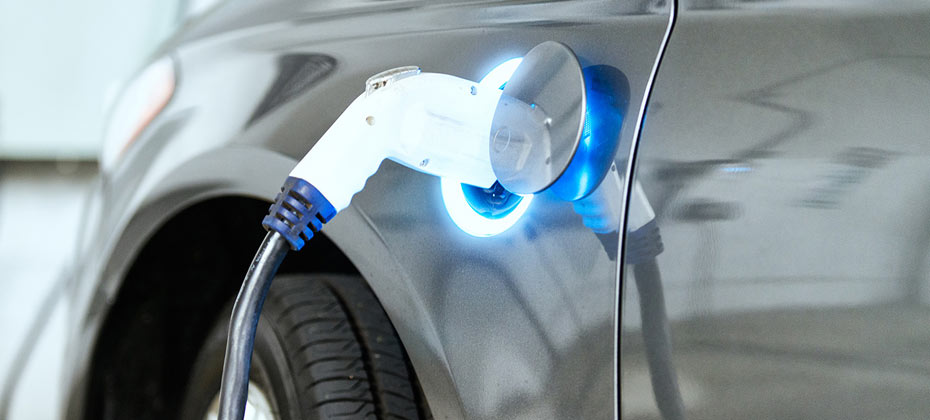Automotive Blog
Welcome to the Experian Automotive Blog. Keep current on best practices and trending topics for the Auto industry.

Experian Automotive has just released electric vehicle data insights in our 2022 Electric Vehicle Year In Review infographic.

Experian’s State of the Automotive Finance Market Report: Q4 2022 found that the year-over-year (YOY) average new loan amount increased 4.04%, a smaller growth rate compared to 12.46% YOY in Q4 2021

Pickup trucks have long been a staple of the automotive industry, and the data show this is still the case—even seeing some growth in the third quarter of 2022. Experian’s Automotive Consumer Trends Report: Q3 2022 took a deeper dive into pickup trucks and found they accounted for 20.4% of new retail vehicle registrations, increasing from 16% in Q3 2021 and surpassing sedans (16.5%) and SUVs (11.4%). The growth in pickup truck popularity is partially due to their functionality and towing capabilities, among other features that smaller vehicles may not offer. As more consumers continue to be drawn to pickup trucks, it’s important for automotive professionals to not oversimplify by grouping potential shoppers together, but instead, dive into the data to understand the current trends, such as who is buying and the type of truck segments they may be interested in. Breaking down pickup truck registration trends by generation When looking at who is in the market for a pickup truck, data shows Gen X made up the largest percentage of buyers in Q3 2022, comprising 34.6%, with Baby Boomers coming in at 28.3%, and Millennials not too far behind at 25.2% this quarter. Knowing who is making up majority of the pickup truck registrations and the types of trucks they are looking for goes hand-in-hand when automotive professionals are searching for ways to market strategically and ensure they are reaching the right audience. For instance, in Q3 2022, 43.1% of Gen X buyers opted for a full-size luxury truck, such as the Rivian R1T, while 35.7% preferred a full-size truck, such as the Ford F-150, and 32.9% bought a midsize truck, such as the Toyota Tacoma. By comparison, 20.4% of Baby Boomers bought a full-size luxury truck in Q3 2022, 27% chose a full-size truck, and 30.7% opted for a midsize truck. Data shows Millennials preferred a full-size luxury truck over any other type—coming in at 30.6%, while 26% opted for a full-size truck, and 23.3% bought a midsize truck. As consumer preference continues to shift throughout the automotive industry, analyzing and leveraging data will allow professionals to properly assist consumers when looking for a vehicle that fits their needs, as well as stay up-to-date on the current trends. To learn more about pickup trucks and other consumer trends, watch the entire Automotive Consumer Trends Report: Q3 2022 webinar.

In our continued efforts to make vehicle information and insights quick and easy to read for auto dealers, we’ve redesigned our AutoCheck vehicle history report. As competition for used vehicles remains high, dealers must make quick decisions on whether to acquire a potential vehicle. Whether you need to evaluate a trade-in or want to make a flat-out offer on a vehicle, quickly accessing the vehicle’s history is only the first step. We’ve made it even easier for you to get key information in our newly designed report. We are confident that the newly designed report will continue to help dealers better manage risk and confidently buy and sell the right vehicles.Did you know?• AutoCheck has data from over 95% of U.S. auction houses with 99.82% manufacturer coverage of open recall data for vehicles on the road • Experian aggregates and analyzes tens of thousands of distinct accident sources; many provided only to AutoCheck • AutoCheck has exclusive Auction Announcement data for up to 2.7% of vehicles in operation (that have been to an auction)• We’re the only VHR provider integrated on all the top consumer vehicle shopping sitesHow AutoCheck can help improve your business You may also be interested in learning how AutoCheck VHRs can improve your business by reading Vehicle Detail Pages with a Free VHR Have Higher Lead and Sale Conversion Rates or how we helped a large insurance company better manage risk in our case study, LexisNexis Helps Manage Risk for National Insurance Company. Learn more about the benefits of becoming an AutoCheck subscriber.

To help the industry better understand the widespread growth, ahead of the show we compiled an Auto Finance Year-in-Review report to break down all things EV—from financing trends to vehicle segments and more.

In the last decade, electric vehicle registrations have increased by 3,600%, and the demand for alternative fuel vehicles continues to soar. Manufacturers are rapidly expanding alternative fuel operations to keep up with the demand from consumers that has expanded across all generations. Target in-market EV consumers Today’s automotive marketers understand that finding targeted consumer audiences is critical to a successful marketing strategy. With more electric vehicle model options available and improved infrastructure driving popularity, we’re seeing automotive marketers wanting to target in-market EV consumers as well as current alternative fuel vehicle owners. Applying data-driven insights to find targeted consumer audiences is critical to today’s marketing strategies. For example, as of Q2 2022, 23.5% of plug-in hybrid owners that returned to market, migrated to an electric vehicle As a marketer, would it be helpful to select In-Market Likely Segment Switchers as your target audience for your marketing campaign? Or Hybrid owners as a whole? Experian Automotive has a variety of alternative fuel owner audiences and in-market consumer audiences to help marketers target the right consumer with the right message on the right channel. The Experian Marketing Engine Syndicated Auto Audience portfolio includes 70+ audiences focused on likely buyers and owners of Electric Vehicle (EV) and Plug-In Hybrid (PHEV) vehicles. Of Experian’s 750+ syndicated auto audiences, we offer a subset of over 25 audiences focused on individual EV/PHEV vehicle models. How to find EV audiences on your preferred platform Experian electric vehicle audiences are available in the Auto Audience area of your preferred platform. Simply navigate to Experian Automotive’s Audiences to find Electric Vehicle related audiences, as well as all of Experian’s Auto Audiences. To learn more about Auto Audiences for Electric Vehicles, contact our Subject Matter Expert, Gary Meteer.

Strategic automotive marketing and measurement are getting more complicated with the increase in consumer channels and devices. This makes it harder for marketers to obtain a complete measurement picture. Measurement terminology is also evolving. Here's a look at some of today’s key definitions to familiarize you with the nuances and challenges it may already bring to your analytics. What is the open web? The open web is the web as a whole or the public side of the web with all the millions of sites that do not require a subscription or fee to use them. For example, in our industry, this would be an auto manufacturer’s website, a dealership’s website, or an online consumer shopping portal where you list your vehicles for sale – all of these are on the open web. These sites use open-source standards to deliver content to consumers without a separate app or company acting as gatekeepers. However, tracking approaches on the open web will shift as cookies will eventually disappear. What is a walled garden? A walled garden is a closed platform or ecosystem (e.g., Amazon, Apple, Facebook) wherein the platform provider controls the content, applications, and/or media and restricts access as it sees fit. The publisher offers consumer privacy and rich first-party data to advertisers, but the measurement is limited to activity within the ‘walls’ of the garden. From an advertising perspective, buyers can only access these platforms through their own buying tools; they do not give access to any independent platforms. The publisher (the Walled Garden) handles all the buying, serving, tracking, and reporting within their ecosystem. So, let’s say you are an automotive consumer checking out vehicles. If you’re reading your Facebook feed on your phone and you see an advertisement for a vehicle or a dealership, that OEM or dealership is advertising in a walled garden – in this case, the walled garden is Facebook. The challenge to an advertiser is that they can only measure activity that occurred within that ecosystem using the walled garden’s platform and measurement tools. What is a hedged garden? The “hedged garden” is a new industry concept. A hedged garden is when a network of publishers work together to activate first-party data sets in a privacy-compliant way across many partners at scale. These publishers run their businesses with large amounts of first-party consumer data. They often do not own or operate complete buying stacks. For example, companies like Target and Walmart let advertisers employ their data on shoppers for ad targeting, but brands can use their own buying tools. Other examples of a hedged garden might include Connected TV platforms such as Vizio’s or Samsung’s in-house ad businesses. If you’re sitting on your couch watching your Vizio-connected TV and you see an advertisement for a dealership or a manufacturer, they are advertised within that hedged garden. As an advertiser, the advantage is that you can use their buying tool when targeting shoppers for your advertising. How to fill in the gaps the walled garden may leave open The walled garden can challenge marketers who desire cross-channel activation and measurement. If you're a marketer working within a walled garden, we can work with the data you have to give you a complete picture of your audience’s digital journey. Our experience and vast databases, including vehicle, credit, and customer insights, allow us to continue building strong partnerships within the fast-growing (Hedged Garden) ecosystem. We can help. Our Subject Matter Expert, Laurel Malhotra will be happy to answer any questions you may have. Contact her today.

According to Experian’s Automotive Market Trends Report: Q3 2022, new vehicle registrations were down 16.4%, going from 12.2 million through Q3 2021 to 10.2 million this quarter. Used vehicles experienced a 12.6% decline, coming in at 29.8 million through Q3 2022, from 34.1 million the previous year.

Experian’s State of the Automotive Finance Market Report: Q3 2022 found that consumers with credit scores between 300 and 660—also considered as the nonprime segments—are continuing to opt for used vehicles rather than new.

In honor of all the marketers who frantically created and activated audiences for Cyber Five sales (Thanksgiving Day through Cyber Monday), this blog announcing a resource for automotive marketers on how to best activate their automotive audiences is timely! I realize the following spending stats are totals for consumer spending, not just automotive consumer spending, but these dollar amounts put advertising and media spending into perspective. Adobe Analytics reported that consumers spent $35.4 billion online over the Cyber Five period this year, breaking a record. Many marketing campaigns ran on various channels to reach that many consumers. Strategic campaign development is key to effective activation Marketers know all the hard work that goes on behind the scenes before media is activated. As automotive marketers, let’s recap what typically happens before activation even begins. It is common to begin by linking fragmented consumer data across channels, platforms, and devices into unified customer profiles for more effective cross-channel targeting. Using identity solutions helps marketers target the right consumers on the right channels. After unifying customer profiles, marketers often look at auto-specific market, vehicle, and consumer data insights to help gain a deeper understanding of market competition and opportunities, vehicle interest, and critical consumer information (demographics, psychographics, etc.) Next, many marketers leverage automotive, lifestyle, and predictive data to target specific consumer segments across all channels for true omnichannel marketing. Once this is complete, marketers can choose their audience, depending on what their goals are and which channels they are focusing on. Once all this pre-work is finished (and I over-simplified all the hard work behind these steps), marketers need to Activate their campaigns by selecting the best channels. Leverage various media partners and platforms At Experian Automotive, we believe marketers can improve their ability to reach their intended audience participants and measure their overall campaign results if they are strategic during Activation. Leveraging various media partners and platforms allow marketers to activate audiences more effectively and execute more strategic, measurable, multi-channel marketing campaigns. The key is to find a vast network of media destinations and onboarding capabilities that empowers you to activate audiences and connect with a single audience across channels delivering personalized, addressable experiences. To help auto marketers understand all the areas of Activation, we’ve written a resource, How to Activate Your Audience on the Most Strategic Channels, that you can download now. We’ve also written these other resources to help automotive marketers use data insights to develop more strategic, measurable marketing campaigns. They are all complimentary so feel free to download them too! Identity Solutions: Helping Marketers Deliver Personalized Communication for Life Audiences: Automotive Audience Choices are Key to Ever-Changing Strategies Customer Insights: Understand Your Customer Before Choosing Your Audience Measurement: Measuring Marketing Performance is Critical to Long-Term Succes

New EV registrations have increased almost 60% since this time last year—and while gasoline vehicles continue to dominate the market, data shows new gasoline registration volumes are dropping year-over-year.

According to Experian’s Automotive Consumer Trends Report: Q2 2022, EVs comprised more than 1.7 million vehicles in operation throughout the US, quite a jump from more than 400,000 EVs just five years ago in Q2 2018.

When your marketing strategies don’t go as planned, don’t you wish you could have taken a “mulligan?” In today’s marketing world, it’s normal and critical to measure marketing effectiveness.

Did you know that GenX had the most Hybrid owners migrate to Electric Vehicles in 2021? And believe it or not, the next group behind GenXers were Boomers! That’s right, not millennials or GenZ…Boomers! We have many more details to share on the Electric Vehicle segment and the consumers in that segment who buy them in our newly released Experian Automotive Consumer Trend Report: Q2 2022. Every quarter, Experian’s Automotive Consumer Trends Report provides insights into specific vehicle segments and the associated consumers within that segment. This quarter focuses on the Electric Vehicle (EV) market. The report answers these questions: How many EVs are on the road? Where are they located? How have recent EV registrations shifted the geographic distribution? Which manufacturers are selling those vehicles? Who is taking market share from whom? Who are the consumers who registered those vehicles? What are the demographic and psychographic insights for those consumers? There are two ways to receive the report information: Watch the on-demand presentation of the report while our analyst provides critical insight & analysis OR Download a PDF version of the report At Experian Automotive, we understand that marketers need to deeply understand consumers to develop targeted, effective marketing strategies. Whether you are an OEM marketer, an agency, or an auto dealer, our presentation will transform complex market data into actionable insights that you can begin using immediately.

The AutoCheck FREE Flood Risk Check site has been updated with data from Kentucky, Colorado, Texas, and Missouri floods New cars continue to be in short supply due to the microchip shortage, so consumers quickly turned their attention to used cars. Unfortunately, dealers continue to struggle with obtaining enough used car inventory to meet demand. To add to an already challenging time, Mother Nature has brought record flooding in multiple areas of the United States. It’s more important than ever that dealers be careful about obtaining pre-owned cars that could potentially have flood damage. The best way to mitigate the risk of purchasing a flood damaged vehicle is to start by running an AutoCheck Free Flood Risk Check. Visitors simply enter any vehicle's 17-digit VIN and the tool will check for flood brands and provide information if the vehicle was registered in a region impacted by a FEMA disaster declaration. Two levels of reporting available The first level of reporting determines whether the vehicle has been titled/registered 12 months prior in a county that has been identified as requiring public and individual assistance (FEMA categories A and B) for a FEMA-declared major disaster. This would yield a “Yes” result. For instance, you would get a “Yes” result if the vehicle was registered in an impacted area during the time of a FEMA-declared major Hurricane disaster. The “Yes” result should not be interpreted as confirmation of flood damage or even possible flood damage. The data is provided merely as information regarding the location of the vehicle’s registration/title history so users can be aware of risk exposure. For example, the Hurricane Ida region had thousands of damaged cars, but some cars in the region may not have been damaged by the hurricane — the owner could have driven the car when they evacuated, or a child or other family member may have been out of town with the car when the hurricane hit. The second level of reporting is based on search results from Experian data such as flood title and problem records, including flood State title brands, auction flood announcements, salvage auction flood designations, and other vehicle records determined by Experian to relate to or suggest an increased likelihood of flood damage or risk exposure. It takes time for claims and updates to vehicle title information to appear on a vehicle’s history and although the DMV requires that title brands be issued for vehicles damaged by floods, not every vehicle flood event is reported by car owners. Unreported flood events may not appear on an AutoCheck Flood Risk Check or AutoCheck Vehicle History Report. Although Experian provides flood related records from available data sources, we cannot provide assurance that an AutoCheck Flood Risk Check that does not produce any records means that the subject vehicle has not experienced flood damage. That’s why it’s important to review a full AutoCheck Vehicle History Report, which—in addition to potential flood damage—includes reported accidents, branded titles, recalls, number of owners and more. Once you run the full Vehicle History Report we recommend an independent evaluation and inspection of the vehicle to determine and confirm a vehicle’s condition prior to purchase. Try the AutoCheck Flood Risk Check today to help mitigate the risk of purchasing flood damaged vehicles. Not an AutoCheck subscriber? Contact us to become an AutoCheck client.